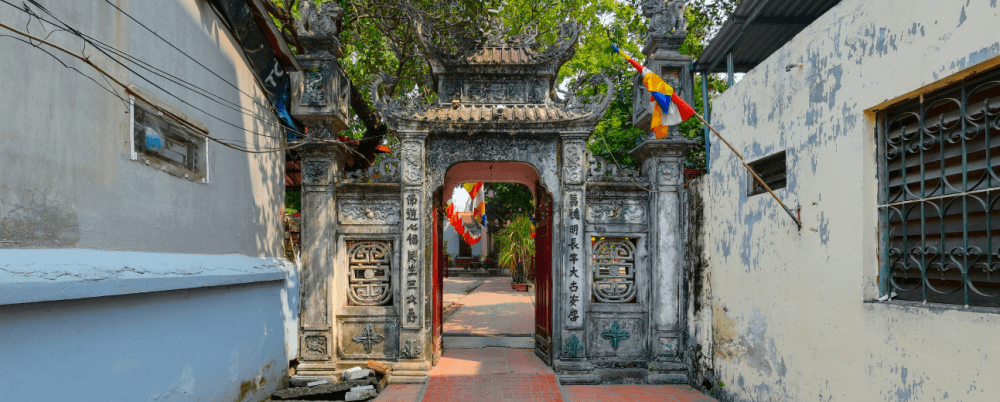

Introduce
According to the “Viet dien u linh” by Ly Te Xuong in the 14th century, when writing about Khai Nguyen Temple, it was recorded: "In the Tang Dynasty (713 - 739) the Tang’s ambassador Lu Ngu when come to Vietnam was staying in An Dien hamlet, between the two districts of Long Do and Tu Liem, the land is flat, spacious, trees are good, the river Gia La in the back which make the landscape even more beautiful and then establish the temple, worshiping the deity of the Imperial Army.
One night Lu Ngu dreamed of an old man come and told Ngu that: This should be named Khai Nguyen, this village also renamed Khai Nguyen village. Ngu wake up, according to the dream, rename the village and set up the record, then set up a statue of the god of the territory to the merit. The name of the temple is Gia La. At the beginning of the year of Thieu Long’s reign (1258) in Tran Dynasty, monk Van Thao rebuilt the temple, converted to pagoda ... Since then, many people from everywhere come and visit the pagoda.
In terms of architecture, Quan La Pagoda is similar to other pagodas, which are gate, garden, courtyard, main pagoda, tablet house, Mother Goddess house, Ancestor altar house, living house and the tower garden.
The temple has three system of statues: the statue of the Buddha, the statue of Mother Goddess and the statue of Queen with the total of 37 statues in the Three Jewels and two big statue layers, 13 in the Mau house and 5 in the Ancestor altar House is arranged as follows:
The first is the Three Buddha statues, this statue is representative of 3000 buddhas in the past, present and future. The one in the middle is in a robes sitting lotus with snail hair, the pedestal of beautiful statue with three layers of floating lotus flower dating back to the 18th century.
The statues in two sides are two different statues with two styles of hand sitting one lotus like the Buddha.
The third row is the statue Amitabha sitting meditation. This is the most beautiful statue of the temple dating back to the 18th century.
The fourth row: Di Lac and Tuyet Son. These two beautiful statues date back to the 19th century, but have overcome the symbolic meaning of the representing by having face with a portrait, though still creating cheeks, nose and lips, resulting in high sculptural value.
On the side of the Buddha's wall are 10 Pluto. Each one looks different.
In addition to the front line are two statues of the Khuyen Thien and Trung Ac standing next to wild beasts.
Khai Nguyen pagoda was built and developed from thousands of years ago, there are many values of ancient history, high value of architectural art together with a beautiful landscape has blended into each other, It is the center of unity of people in the region, where people educate people towards the good, arouse the love of the country. The pagoda was renovated and embellished in 2015.
It was recognized by the Ministry of Culture and Information as the Ministry of Culture, Information and Sports (now the Ministry of Culture, Sports and Tourism) as a national architectural monument at Decision No. 138 / Decision No. 31/1992 ./.
Artifacts
Map
Nearby Places
No. 43C, alley 497, quarter 2, group 15, Lac Long Quan Street, Nhat Tan Ward
0.69Km
No.6, Lane 319, An Duong Vuong Street, Phu Thuong ward
2.15Km
Lane 242, Lac Long Quan Street, Buoi Ward, Tay Ho District, Hanoi.
No. 20, Lane 472, Cluster 3, Lac Long Quan Road, Nhat Tan Ward, Tay Ho District, Hanoi.
No. 35, Lane 416, Lac Long Quan Road, Nhat Tan Ward, Tay Ho District, Hanoi.
2.05Km
No. 07, Lane 30, Tay Ho Road, Quang An Ward, Tay Ho District, Hanoi.
1.84Km
Residential Area No. 5 (No. 3, Lane 200, Au Co Road), Tu Lien Ward, Tay Ho District, Hanoi.
2.43Km
Residential Area No. 5 (No. 3, Lane 200, Au Co Road), Tu Lien Ward, Tay Ho District.
2.46Km